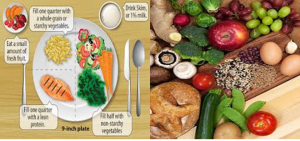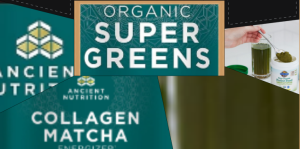Chia seeds’ mild flavor and adaptability make them a simple addition to any meal. Here are some details surrounding chia seed consumption, health advantages, and scientific makeup:
Health Benefits:
1. Packed with nutrients:
Chia seeds are an excellent resource of fiber, protein, antioxidants, calcium, magnesium, healthy fats (omega-3 fatty acids), and good cholesterol.
2. Digestion:
Chia seeds’ high fiber content aids in a healthy digestive system and helps ward toward constipation. Chia seeds absorb liquids and turn into a gel-like substance that can help control elimination and increase feelings of fullness.
3. Omega-3 fatty acids:
Chia seeds, especially alpha-linolenic acid (ALA), are a great plant-based source of omega-3 fatty acids. Omega-3 fatty acids have been shown to enhance brain and heart health as well as lower chronic inflammation levels in the body.
4. Blood sugar regulation:
Because chia seeds have a low glycemic index, their delayed absorption causes blood sugar levels to rise gradually. This may be helpful in controlling blood sugar levels while minimizing insulin spikes.
5. Weight management:
Chia seeds’ fiber, protein, and healthy fats may help increase fullness and decrease feelings of hunger, which may help with weight management.
Chemical Composition:
Chia seeds are abundant with a variety of nutrients and beneficial substances.
Here’s the approximate chemical composition of chia seeds per 1 ounce (28 grams):
Calories: 137
Protein: 4.4 grams
Fat: 8.6 grams (including omega-3 fatty acids)
Carbohydrates: 12.3 grams (11 grams of fiber)
Calcium: 179 milligrams
Magnesium: 95 milligrams
Phosphorus: 162 milligrams
Potassium: 44 milligrams
Zinc: 1.0 milligram
Vitamins: Chia seeds also contain small amounts of vitamins B1, B2, and B3.
Although chia seeds provide an abundance of health advantages, it’s important to remember that they should not be the only source of nutrition; rather, they should be swallowed as part of a balanced diet.
As usual, before making any big dietary changes or including new foods in your diet, it’s a good idea to speak with a medical expert or an experienced dietitian.
How to eat chia seeds
Chia seeds are small, oval-shaped, and can be crushed or eaten whole. You can eat them raw or cooked and mix them with other things. When chia seeds are soaked in liquid, they take on a gelatinous texture that can be used to make puddings or added to smoothies, yogurt, or porridge. Chia seeds are also frequently used in salads, cereals, and baked goods.
Eat chia seeds in a variety of ways. Here are a few commonly utilized techniques:
1. Raw:
You can eat chia seeds uncooked. Just toss them over smoothies, yogurt, oats, and salads. Their gentle, nutty flavor goes nicely with a variety of dishes.
2. Soaked:
Many individuals prefer the gel-like consistency that may be produced by soaking chia seeds in liquid. Chia seeds can be soaked by combining them with water or any other liquid in a ratio of roughly 1:3 (1 part chia seeds to 3 parts liquid), such as almond milk or fruit juice. Let them sit for about ten to fifteen minutes, stirring constantly, until they take on a gel-like consistency. The soaked chia seeds can then be eaten raw or added to dishes like chia seed porridge.
3. Chia Seed Pudding:
One well-liked method of digesting chia seeds is through their pudding form. In a jar or bowl, combine chia seeds with your preferred liquid (milk or plant-based milk), sweetener (honey or maple syrup), and flavorings (vanilla extract or chocolate powder) to make chia seed pudding. After giving the mixture a good stir, cover and chill for several hours or overnight, or until it thickens and takes on the consistency of pudding. For extra flavor and crunch, you can sprinkle granola, almonds, or fruits on top.
4. Baked Goods:
You can add chia seeds to baked products such as cookies, muffins, or bread. Just mix them into the pastry material or batter before baking. In your baked goods, chia seeds can offer a delicate crunch and nutritional benefits.
Whether eating chia seeds, especially soaked or dry, keep in mind that they absorb liquids and expand in the inside of your stomach, so drink lots of water. Additionally, this can aid in eliminating any possible gastrointestinal problems.
Because chia seeds are a concentrated kind of fiber, it’s best to start with tiny doses and increase them gradually to give your body time to get used to them. As always, for individualized guidance on putting chia seeds in your diet, speak with a medical professional or a qualified dietician.
How to eat chia seeds with water
You can take the following actions to consume chia seeds with water:
1. Determine how many chia seeds you want to use. One tablespoon of chia seed powder to one cup of water is a typical ratio, but you can change the ratio of each ingredient to suit your tastes.
2. Transfer the chia seeds into a container or glass.
3. Fill the chia seeds with water. Water that is chilly or room temperature can be administered. Three to four times the volume of chia seeds should be the amount of water used. For example, you might add three to four quarters of water to one tablespoon of chia seeds.
4. In order to make sure the chia seeds are distributed equally across the water, give the mixture a quick, forceful stir. To avoid clumping, this process is crucial.
5. Give the combination a five-minute rest. The chia seeds will start to take up the water throughout this time frame and start to gel.
6. Give the mixture another stir to disperse any clumps and guarantee that the gelatinous texture is equally distributed.
7. You can improve the flavor by adding flavorings like lemon juice, maple syrup, or a little fruit juice if you’d like.
8. Take a slow sip of the chia seed combination to let it rehydrate your body and give you a healthier feeling.
It’s crucial that you understand that chia seeds may absorb a lot of liquid, so it’s best to stay hydrated overall when taking them. Furthermore, it could be an excellent decision to start out modest and increase your daily allowance of chia seeds gradually if you’re new to them so that your body can get used to the greater amount of fiber content.
As usual, before making any big dietary adjustments, it’s advised to speak with a healthcare provider or a trained psychologist if you have any particular food preferences or medical issues.
Chia seeds benefits and side effects
Although chia seeds provide a number of potential advantages, there could be certain drawbacks. Let’s investigate both facets:
The advantages of chia seeds
1. Rich in Nutrients:
Chia seeds are a great source of fiber, protein, antioxidants, calcium, magnesium, and good fats (omega-3 fatty acids).
2. Digestive Health:
Chia seeds’ high fiber content encourages a healthy digestive system and aids in avoiding the symptoms of constipation. Storing chia seeds in liquid creates a gel-like structure that may help suppress bowel movements.
3. Omega-3 Fatty Acids:
Chia seeds, especially alpha-linolenic acid (ALA), are a great plant-based source of omega-3 fatty acids. Omega-3 fatty acids are believed to enhance brain and heart health as well as lower inflammation levels in the body.
4. Blood Sugar Control:
Because chia seeds have a low glycemic index, their delayed absorption and breakdown cause blood sugar levels to rise gradually. This may be helpful for maintaining blood sugar levels while avoiding insulin spikes.
5. Weight Management:
Chia seeds’ fiber, protein, and healthy fats may help to decrease hunger and increase the feeling of satisfaction, thus helping with weight management.
Consequences and Safety Measures:
1. Digestive Problems:
Eating chia seeds may cause a few individuals to feel discomfort in their stomachs, including bloating, gas, or cramping. Frequently, this is attributed to the high fiber content. To give the body time to settle in, it is advised to start with tiny amounts and gradually raise intake.
2. Allergy Reactions:
While uncommon, chia seed allergies may happen in certain populations. Before adding chia seeds to your diet, it is advised that you take caution and speak with a healthcare provider if you have a previous history of allergies.
3. Interactions with Medication:
Chia seeds may have a negative interaction with some drugs, specifically those that thin the blood. Before integrating chia seeds into your diet, it is imperative that you speak with a medical professional if you are taking any medications, particularly coagulation inhibitors or antiplatelet medicines.
4. Hydration:
Since chia seeds absorb a lot of humidity, it’s crucial to stay well-hydrated when taking them so you can avoid dehydration.
Before making any big dietary modifications, it’s always a good idea to speak with your physician or a qualified dietitian, particularly if you have any particular health issues or concerns. They may offer you individualized advice based on your particular requirements and assist you in determining the quantity of chia seeds to include in your diet.
Chia seeds side effects kidney
When ingested in moderation, chia seeds are usually regarded as safe to eat and do not present any serious threats to renal health. It’s crucial to remember that different people may respond differently and have unique medical issues. Here are some things to think about in the context of renal health and chia seeds:
1. Phosphorus Content:
Phosphorus is a mineral that may be problematic for people with kidney conditions, and chia seeds contain it. You may need to keep an eye on how much phosphorus you consume if you have kidney disease or are receiving dialysis. Overconsumption of phosphorus may adversely affect renal function and lead to mineral imbalances.
2. Fluid Balance:
In the stomach, chia seeds can absorb a large amount of liquid and congeal into a gel-like material. For people with kidney failure who need to closely monitor their fluid consumption, this feature can be significant. It’s best to speak with your doctor or an experienced dietitian if you have fluid limits, so you can figure out what quantity of chia seeds to put in your diet.
3. Interactions with Medication:
Omega-3 fatty acids, which are present in the seeds of chia plants, may thin the blood. It’s crucial to speak with a medical professional before adding chia seeds to your diet if you take any medicines that can impact blood coagulation, such as anticoagulants. They can offer advice on possible interactions while helping you come to a well-informed judgment.
Healthcare experts, such as a dialysis doctor or a registered dietitian, can offer individualized advice based on your unique medical history, kidney disease, and general health concerns. This is important to remember while making choices regarding your diet.
Before incorporating chia seeds or making big changes to your eating habits, it’s best to speak with a healthcare provider if you currently have kidney failure or have concerns about the health of your kidneys. They can assist you with establishing a suitable diet plan that complements whatever you want for renal health.
Chia seeds side effects in male and female
Chia seeds don’t usually have gender-specific negative effects and are generally safe to eat. It’s crucial that one remembers that different people will respond differently and that medical problems can change. The following are some things to think about in regards to the possible negative effects of chia seed consumption on both sexes:
Gastrointestinal Problems: Eating chia seeds may cause some people to feel discomfort in their stomachs, including bloating, gas, or cramping. Frequently, this is attributed to the high fiber content. By gradually increasing consumption and starting moderately, one can minimize these effects.
2. Allergy Reactions: While uncommon, chia seed allergies can occur in certain populations. Allergic reactions can have an impact on both men and women equally. It is best to be vigilant and get medical advice from a professional if you have a history of allergies or if you fear an allergic reaction.
3. Interactions with Medication: Chia seeds may have an interaction with several drugs, specifically those that thin the blood. It is imperative that individuals, whatever their gender, speak with their healthcare professional prior to integrating chia seeds into their diet, particularly if they are taking coagulation or antiplatelet medications.
4. Hormonal Impact: Plant components called phytoestrogens, which are found in chia seeds, can have somewhat estrogenic effects on the body. Some people might be apprehensive about how phytoestrogens affect the balance of their hormones. Chia seeds do contain just a tiny amount of phytoestrogen, though, and there isn’t much proof that they have a big impact on estrogen in healthy people.
It’s always a good idea to see a doctor or qualified nutritionist, since they can offer tailored advice based on your unique health problems, medication, and needs. This goes double for any dietary problem.
Before incorporating chia seeds or undertaking big dietary adjustments, it’s best to speak with a healthcare provider if you have any specific fears or medical conditions. They can offer advice based on what you are going through.
How to eat chia seeds for weight loss
Because of their high fiber and protein content, as well as their capacity to encourage satiety, chia seeds can be a useful addition to a diet targeted for weight loss. Here are some recommendations on how to include chia seeds in your dietary regimen to help you lose weight:
1. Chia Seed Pudding:
To make chia seed pudding, mix chia seeds with whatever liquid you like (coconut or almond milk works well). To make a pudding-like consistency, let the mixture lie in the refrigerator for a whole night so the chia seeds can absorb the liquid. Should you so desire, you can also add ingredients like vanilla extract or sweeteners like stevia. This pudding makes an excellent and healthy breakfast or snack.
2. Smoothies:
Incorporate one or two tablespoons of chia seeds into the way you like smoothie mixes. The additional nutrients, protein, and texture that the chia seeds bring to the smoothie will help you feel content for longer.
3. Yogurt Toppings:
Add chia seeds to Greek or regular yogurt. This gives your morning meal or snack more crunch, flavor, and nutrients.
4. Salads:
To add extra sustenance and thus top salads with chia seeds. The additional fiber and protein obtained from the seeds can aid in getting you to feel full.
5. Baked Goods:
If you make your own baked products, add chia seeds to them. To boost the fiber and dietary benefits, you can add them to bread, muffins, or pancakes.
6. Water with Chia Seeds:
Combine chia seeds and water, then allow them to soak for between ten and fifteen minutes. The chia seeds will absorb the water, resulting in a gel-like consistency. For more enjoyment, you can squeeze in some citrus or add a spritz of citrus juice. By consuming the mixture prior to a meal, you might feel more content and consume less food overall.
When taking chia seeds, keep in mind that they absorb moisture and might lead to dehydration if not ingested with enough water.
Although chia seeds can be incorporated into a healthy diet for weight loss, it’s vital to keep in mind that they should only be eaten in moderation as part of a nutritious meal plan. It’s also a good idea to speak with a certified nutritionist or another medical professional for individualized guidance that takes into account your specific dietary needs and weight reduction goals.
Best time to drink chia seeds for weight loss
The “best” time to consume chia seeds to lose weight isn’t specified. Chia seeds can be eaten whenever they are convenient for you and fit into your daily meal plan. A calorie deficit—a situation that occurs when you take in less calories than you burn—is a particularly important element in weight loss.
Having stated that, the following are some proposed windows of time to eat chia seeds to lose weight:
1. Before Meals:
Eating chia seeds prior to a meal may increase feelings of content and therefore help you eat less overall. Before consuming, you can soak the chia seeds in warm water or blend them into a chia seed water mixture. This will allow the seeds to dry out and become gel-like.
2. Breakfast:
Including chia seeds in your meal could potentially be a wise choice. You might make chia seed pudding, smoothies, or yogurt with them dusted on top. Chia seeds’ rich fiber and protein content might help you feel satisfied all morning long.
3. Snacks:
Adding chia seeds to your snacks can boost nutrition. To add substance, nutrition, and satiety to vegetables, fruit, or homemade energy bars, sprinkle them on top.
4. Before Workout:
Because chia seeds are nutritious and have a high level of nutrients, consuming walnuts prior to exercise might give you prolonged energy. They provide you with beneficial fats, proteins, and carbohydrates that will help you accomplish better during your workout while sustaining the amount of energy you have.
Remember, portion control, calorie intake, physical activity level, and overall diet equilibrium all play a larger role in weight loss than the timing of chia seed ingestion them. Chia seeds ought to become a component of a nutritious and well-balanced nutritional regimen that helps you achieve your goal of losing weight.
As usual, it’s best to speak with a registered dietitian or another physician. They can offer you individualized advice and assist in developing a diet plan that meets your unique requirements and objectives.
Chia seeds benefits for skin
Because of their many qualities and high nutrient content, chia seeds may be good for the skin. The following are some probable advantages of chia seeds for skin health:
1. Antioxidant Protection:
Vitamin E and other antioxidants are prevalent in chia seeds. Antioxidants assist in insulating the skin from UV rays and other environmental variables that might induce oxidative stress. Along with reducing skin cell damage, this can also decrease the aging process.
2. Hydration:
Chia seeds have a tendency to absorb more water than they weigh and consolidate into a gel-like material. They can enhance skin hydration and help retain humidity, whether applied topically or ingested. Skin that is properly nourished looks smoother, plumper, and more glowing.
3. Omega-3 Fatty Acids:
Chia seeds, especially alpha-linolenic acid (ALA), are a great vegan source of omega-3 fatty acids. Omega-3 fatty acids can support the ongoing preservation of healthy skin since they contain anti-inflammatory qualities. They might lessen the inflammation produced by skin disorders like psoriasis, eczema, and acne.
4. Skin Barrier Function:
Omega-3 and omega-6 fatty acids, which are contained in chia seeds, are important for preserving a healthy skin barrier. Strong skin barrier functions assist in protecting the skin from environmental contaminants, retaining moisture retention, and maintaining flexibility and resilience.
5. Nutrient Profile:
Zinc, vitamin B3 (niacin), and selenium are just a few of the nutrients that are useful for skin health and may be found in chia seeds. These nutrients play a role in the creation of collagen, which must be produced to keep skin supple and stop wrinkles from appearing.
6. Exfoliation:
Chia seeds provide a mild exfoliating agent when ground into a fine powder. They can aid in pore purification and the elimination of dead skin cells, giving the complexion a smoother, more radiant appearance.
It’s crucial to remember that while chia seeds may aid skin, each person’s results may differ. Rather than depending exclusively on chia seeds to maintain glowing complexions, it’s best to include them in a well-balanced diet and skincare regimen. For individualized guidance and treatment choices, it is recommended that you visit a dermatologist or skincare professional if you have specific skin-related issues or concerns.
chia seeds and diabetic
Chia seeds have a low glycemic index, a high fiber content, and the ability to enhance blood sugar control, making them a beneficial addition to the diet of individuals who have diabetes. Here’s how people with diabetes might benefit from chia seeds:
1. Reduced Glycemic Index:
Chia seeds have a low glycemic index, which suggests their effect on blood sugar levels is insignificant. Items with a low glycemic index take longer to digest and absorb, which causes blood sugar levels to rise gradually. Blood sugar rises and falls may be averted as a result, which is especially significant for diabetics.
2. High Fiber Content:
Chia seeds are an excellent way to get fiber into your diet. Because of the high quantity of fiber, blood sugar levels can be stabilized, and improved glycemic control can be fostered by accelerating the breakdown and uptake of carbs. Additionally, by adding bulk to the diet, fiber can help maintain weight and provide an overall feeling of fullness.
3. Omega-3 Fatty Acids:
Alpha-linolenic acid (ALA), in particular, is abundant in omega-3 fatty acids found in the seeds of chia. Research has shown that omega-3 fatty acids may help people with diabetes by lowering inflammation and enhancing insulin sensitivity.
4. Nutrient Density:
Protein, calcium, and magnesium are just a few of the crucial vitamins and minerals that chia seeds are full of. These nutrients can help maintain ideal blood sugar control and are necessary for overall health.
A diabetic’s diet needs to take into account meal planning in general as well as portion sizes while consuming chia seeds. Next are some pointers:
Start small. If chia seeds are well-tolerated, consider incorporating a tiny amount into your diet initially before gradually increasing it.
Keep yourself hydrated. Chia seeds take in liquid and gel up. When taking chia seeds, it’s especially important to stay hydrated to prevent any potential problems with your stomach.
Incorporate them into well-rounded meals. Toss chia seeds into meals that have a combination of healthy fats, proteins, and carbohydrates. This can offer a well-rounded nutritional profile while encouraging stable blood sugar levels.
It is crucial that you work closely with a qualified dietitian or another medical professional who can offer you individual guidance and assist you in incorporating chia seeds into your diabetes medication schedule. They can help you design a food plan that meets your own unique needs, way of life, and blood sugar objectives.
Most Important Post For You

What are the symptoms of diabetes?
Many people are unknowingly suffering from type 2 diabetes due to not knowing the symptoms. Doctors often diagnose diabetes when they perform a blood or

What to do if diagnosed with type 2 diabetes?
By making some changes in their daily lives, many people can live a healthy life by keeping diabetes under control. However, it is important to

Hyperglycemia or Increased Sugar
Increased blood sugar, or blood sugar level, is called hyperglycemia. This is a known problem for diabetic patients. Hyperglycemia can occur in patients with any

Diabetic Food List
If you need to change your diet, try making small changes each week. A healthy diet will help keep your diabetes under control. At the

What to do if burned
Improper treatment can lead to various long-term complications including wound infection. If you don’t treat cuts properly, they can get infections and other problems in

What is the way to eliminate gastric?
Gastric problems happen to more or less everyone. If you know how to remove the gastric, you can get rid of this problem. Gastric symptoms

5 Strategies to Prevent Diabetes
Healthcare professionals first advise individuals with diabetes to avoid consuming sugary or sweet foods. And this is exactly why there is a common belief that

You don’t have to give up sugar, pay attention to 3 habits to stay diabetes free
Blood sugar levels are high. Many favorite foods had to be eliminated from the diet. From tea to chutney, sugar has been removed from all

Pacemakers in the brain to control Parkinson’s disease
Parkinson’s disease continues to disrupt the normal lives of many people. To control this disease, there are benefits to inserting electrodes into the brain. The

Boost Your Health with Ancient Nutrition Organic Supergreens Powder
At a Glance Introduction: It might be difficult to maintain a balanced diet in the fast-paced world of today. That being said, you can simply

Type-2 diabetes is mostly caused by salt, not sugar.
According to a recent study, the idea that only eating sugar causes diabetes is wrong. Another ingredient known to increase the risk of diabetes is

The benefits of the body if you stop eating sugar for 1 month!
There are a few people who do not like sweets. Rasgolla, pies, and jillipi during the festive season Even if you don’t eat sweets directly,







